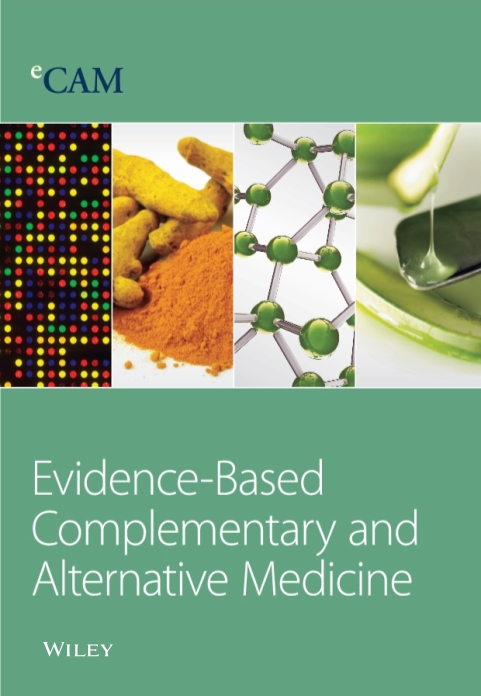评估巴里兰不同部位的体外抗菌、细胞毒性、溶栓和抗关节炎特性
4区 医学
Q2 Medicine
Evidence-based Complementary and Alternative Medicine
Pub Date : 2024-04-30
DOI:10.1155/2024/8148610
引用次数: 0
摘要
许多不同的草药提取物历来被用于治疗微生物引起的感染、损伤、癌症、血栓形成和关节炎。本研究旨在确定巴里兰 1 号(BO)植物茎和种子乙醇提取物的抗菌、细胞毒性、体外溶栓和体外抗关节炎特性。这种兰花植物由位于加济布尔的孟加拉国农业研究所(BARI)开发。抗菌研究中使用了 14 种微生物,并将兰花样品与环丙沙星作为参照物进行了比较。结果发现,BO/种子提取物具有更强的抗菌活性。盐水虾致死试验被用来评估 LC50 值。与 BO/种子提取物相比,BO/茎提取物表现出更高的细胞毒性潜力。采用两种浓度(1000 ppm 和 100 ppm)和两种培养时间(24 小时和 1.5 小时)来评估提取物的溶栓活性。在溶栓效果方面,BO/茎提取物表现出更大的前景。此外,还研究了四种不同浓度的草药提取物的抗关节炎活性,并将结果与双氯芬酸钠进行了比较。与其他提取物相比,BO/茎提取物的蛋白质变性值最大。本文章由计算机程序翻译,如有差异,请以英文原文为准。
Evaluation of In Vitro Antimicrobial, Cytotoxic, Thrombolytic, and Antiarthritic Property of Different Parts of Bari Orchid
Many different herbal extracts have historically been utilized to treat microbe-induced infections, injuries, cancer, thrombosis, and arthritis. The purpose of this study was to determine the antibacterial, cytotoxic, in vitro thrombolytic, and in vitro antiarthritic properties of ethanolic extracts of stem and seed of Bari orchid 1 (BO) plant. This orchid plant was developed by the Bangladesh Agriculture Research Institute (BARI) in Gazipur. Fourteen microbes were employed in the antimicrobial investigation, and samples of orchids were compared to ciprofloxacin as a reference. The BO/seed extract was found to possess more antibacterial activity. The lethality test of brine shrimps was used to assess the LC50 values. The BO/stem extract exhibited a higher cytotoxicity potential, in comparison to the BO/seed extract. Two concentrations (1000 and 100 ppm) and two incubation times (24 hours and 1.5 hours) were used to assess the thrombolytic activity of the extracts. Regarding the thrombolytic effect, the BO/stem extract has demonstrated greater promise. Furthermore, the herbal extract’s antiarthritic activity was investigated at four different concentrations, and the results were evaluated in comparison with those of diclofenac sodium. When comparing BO/stem extract to other extracts, the greatest values for protein denaturation were obtained.
求助全文
通过发布文献求助,成功后即可免费获取论文全文。
去求助
来源期刊
自引率
0.00%
发文量
1983
审稿时长
2.2 months
期刊介绍:
Evidence-Based Complementary and Alternative Medicine (eCAM) is an international, peer-reviewed journal that seeks to understand the sources and to encourage rigorous research in this new, yet ancient world of complementary and alternative medicine.
The journal seeks to apply scientific rigor to the study of complementary and alternative medicine (CAM) modalities, particularly traditional Asian healing systems. eCAM emphasizes health outcome, while documenting biological mechanisms of action. The journal is devoted to the advancement of science in the field of basic research, clinical studies, methodology or scientific theory in diverse areas of Biomedical Sciences. The journal does not consider articles on homeopathy.

 求助内容:
求助内容: 应助结果提醒方式:
应助结果提醒方式:


